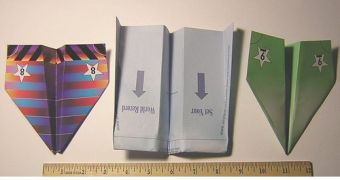New materials that could make cars and planes lighter and much more efficient might be inspired by the tooth enamel of lungfish and garfish, according to a physics researcher from Queensland University of Technology (QUT).
His name is Professor John Barry, from QUT's Faculty of Science and Technology, and he figured this out during his constant search for new materials, inspired by nature, and capable of boosting technological advances.
“The impetus for my work is the need to find better new materials because the vast improvements made in materials over the past 60 years will not continue unless there is constant innovation,” he says.
Professor Barry believes that studying teeth will help us learn a thing or two from Mother Nature, as “teeth in different animals have been adapted or 'engineered' for various purposes.
“As engineering materials, teeth are composite materials with properties which are much superior to any existing synthetic composite.”
They are composed “95% by weight of the mineral, hydroxyapatite, which on its own is very weak but when used by a living system is tough and durable.”
In his study the Professor analyzes three characteristics of the tooth structure, for better understanding its strength and allowing it to be used in the future as a potential material.
He explained that he is focusing on the “dentine's crystals which have various shapes and surface habits and then looking at the way the crystals are arranged in different bundles and also how the tooth surface is arranged to cut, crush or grind food.”
For him, mankind has always tried to imitate nature, and even managed to learn some things from it.
“For example, engineers trying to imitate the properties of wood during World War II developed fiberglass and Velcro is based on the seed burrs that stick to clothing.”
Professor Barry said that they have “started with lungfish because they are an ancient animal and we thought their tooth structure would be much simpler than modern animals that have undergone many more evolutionary changes.
“We were surprised to find the lungfish has a complex tooth micro-structure - not simple at all.
“We are also studying garfish because they have hard-wearing teeth and we want to know how they manage that.”
If the researchers manage to copy some of the structures in teeth, then they might be able to create composites that could be very useful in cars or in airplanes.
“At present, carbon fiber composites are the best available, and although carbon fiber composites are very strong 'along the grain' they are very weak 'across the grain' and their uses are limited,” said the scientist.
“If general-use composites can be developed it will be possible to make cars and aircraft that are lighter and more fuel efficient.
John Barry said that “without new materials we would never had had modern and efficient cars, for example.
“Compared with 60 years ago cars of today have much better handling, acceleration and braking and safety features thanks to the discovery of new materials along the way.”
Science and technology are continuously advancing but the properties of currently used materials are beginning to limit this progress, and a major breakthrough in materials is becoming necessary.
Dr Barry is working with Dr Anne Kemp from the University of Queensland, on this project.

 14 DAY TRIAL //
14 DAY TRIAL //